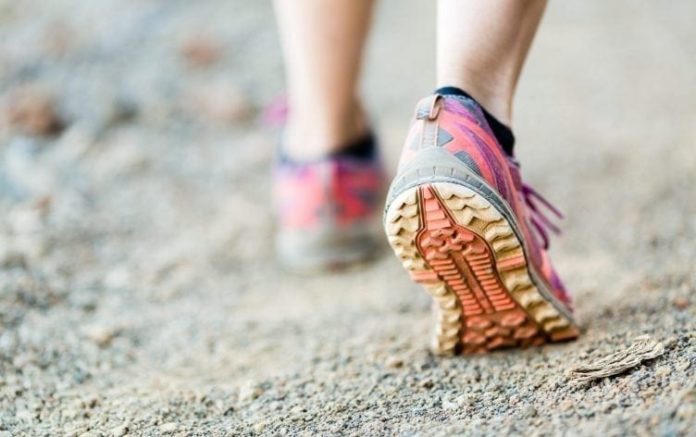
High blood pressure is the number one killer in the world according to the World Health Organization (WHO). As the risks of encountering a heart attack or stroke are infinitely higher for people who have high blood pressure, it is imperative that we get these levels under control. Seventy percent of people who have their first heart attack suffer from high blood pressure and 80% of people who encounter their first stroke suffer from high blood pressure. Not only is high blood pressure dangerous, it is also incredibly costly. In fact, high blood pressure costs the nation $46 billion each year.
The eye-opening statistics don’t stop there.
Did you know that 35.8 million people in the U.S. suffer from hypertension (or high blood pressure)? Of this 35.8 million, 14.1 million people are unaware of their conditions, but 5.7 million people are aware that they have high blood pressure, but their condition goes untreated. The remaining 16 million people are aware of their hypertension and are currently seeking treatment to reach normal blood pressure levels.
Luckily, adopting new lifestyle practices could prevent a large portion of these deaths and diseases.
As medical technologies become more readily available outside of doctors’ offices, tracking blood pressure levels at home is becoming more common. In fact, individuals with hypertension are shown to be more in control of their disease when they practice self-measurement of blood pressure (SMBP) than with medication alone.
According to Jerry Penso, MD, president of the American Medical Group Foundation, engaging patients in their own care—both in and out of the office—makes a big difference when it comes to blood pressure management. Remote patient monitoring can be an integral part of helping patients manage their blood pressure levels. For some patients, blood pressure readings may appear higher when they are in a doctor’s office (sometimes called “white coat syndrome”). This may provide inaccurate results and could potentially lead to dangerous outcomes for patients. Remote patient monitoring can help to combat this syndrome by providing doctors with a larger and more representative set of blood pressure measurements.
Withings conducted a study to test the effects of enrolling people in a blood pressure monitoring program. From the study, we derived that: the program had the effect of reducing participants’ systolic pressure (the pressure in the arteries when the heart beats) by 6 mmHg and diastolic pressure (the pressure in the arteries between heart beats) by 2 mmHg. We also saw that a decrease of 5 mmHg reduces the heart attack mortality rate by 14% and the heart disease mortality rate by 9%.
In addition to regularly measuring blood pressure, tracking and improving physical activity levels can help combat hypertension. WHO estimates that 27% of diabetes cases and 30% of all coronary diseases related to hypertension could be avoided by regular physical activity. Controlled trials have shown a reduction of 5 mmHG systolic pressure in hypertensive individuals who exercised regularly for at least eight weeks.
There’s also a high correlation between weight loss and lowering blood pressure. Users in the Withings study who lost 22 pounds or more over the period of a year also lowered their systolic and diastolic blood pressure by 3 mmHg.
The first step in preventing or lowering high blood pressure: understanding the issue. Nearly half of patients with hypertension are unaware that they suffer from this condition. Thus, it is imperative to monitor your vital signs regularly, and take control of your own health metrics. The second, and more complicated, step is inciting behavior change. Here are some quick ways to incorporate heart-healthy habits into your everyday life:
- Aim for 10,000 steps a day. Start small with a walk during your lunch hour or after dinner. For extra motivation, find a walking partner, as you’re more likely to make exercise a habit with someone by your side. Finding the extra time in your day may seem challenging, especially if you are frequently tied up at work. The first few days of forming a new habit are the hardest, but the second and third weeks will begin to feel more natural. You may even inspire others around you to get active.
- Set a goal, and monitor your progress. Whether it’s a weight-loss goal or training for your first 5K, we are often motivated by specific goals rather than lofty aspirations. Sign up for that 10K you’ve always been talking about, and set up a weekly walking routine to whip yourself into shape. Studies have indicated that people who monitor their daily activity levels with a pedometer walk an average of 2,000 additional steps a day, and record a drop in their blood pressure of 3.8 mmHg.
- Set reminders in your smartphone or daily planner to take your blood pressure regularly. The numbers you record may surprise you, and it’s best to catch high blood pressure at its onset. Sixty-two percent of Withings users changed their daily habits once they started monitoring health metrics.
- The mid-day slump has a way of making us crave a third cup of coffee or a temporarily feel-good snack. We don’t expect you to forgo once-in-a-while treats, but we hope to help you indulge smarter.
- Sleep for 7-8 hours a night, every night. When you’re asleep, your heart rate drops allowing your body to rest up from working hard all day long. If you’re not getting enough sleep, your heart will be overworked which could lead to high blood pressure or other heart diseases.
- Limit your stress levels. We’ve all had bad days, but it’s important to find time to unwind. Try meditating for five minutes a day, squeezing in a yoga class, or journaling positive thoughts.
High blood pressure can be cured once identified. Start measuring your vital signs today and take control of your health.
















